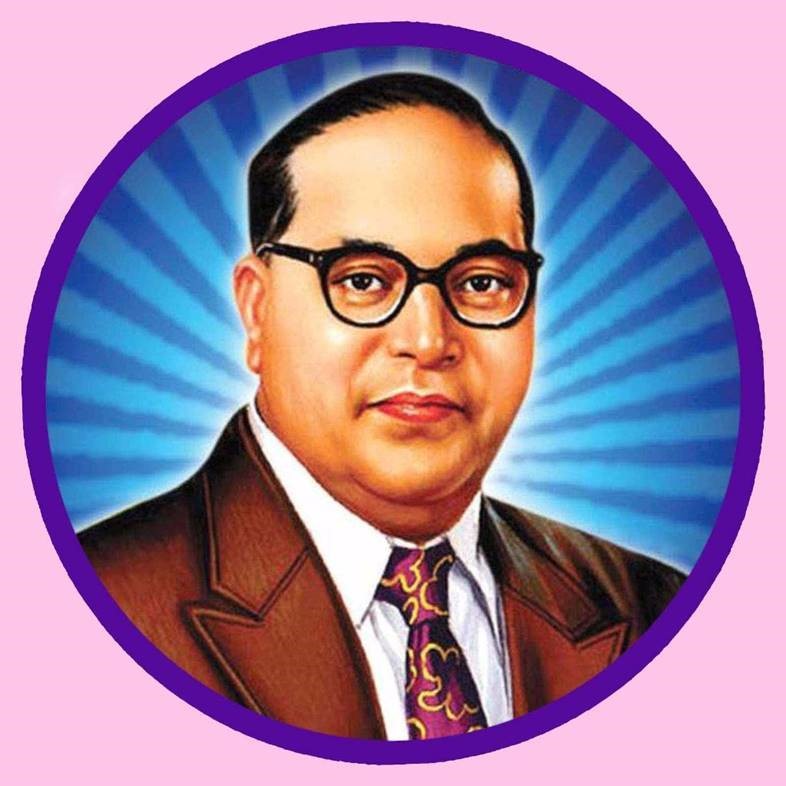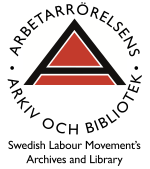
- Detta evenemang har redan ägt rum.
An introduction to the life and writing of B.R. Ambedkar
07 mars 2018 @ 14:00 - 16:00

Välkommen till ett seminarie tillägnat B.R. Ambedkar med de två gästande forskarna Dr. Chitra Sinha och Shivangi Jaiswal, med en introduktion till Ambedkar i ARABs bestånd av Hans Larsson.
Ingen anmälan krävs. Seminariet är på engelska.
”Att formulera principen om rättvisa är en sak. Att omsätta den i praktiken är något annat … ” B. R. Ambedkar
”Demokratin har inte raderat ut kastväsendet. Den har befäst det och moderniserat det. Därför är det dags att läsa Ambedkar.” Arundhati Roy
Bhimrao Ramji Ambedkar var en indisk jurist, ekonom, politiker och bidrog till många sociala reformer. Ambedkar kämpade mot Daliternas sociala diskriminering och för kvinnors och arbetares rättigheter. Han var Indiens första justitieminister efter självständigheten och han var huvudarkitekten av den indiska författningen och därmed en av grundarna av den indiska republiken.
Ambedkar har fortsatt inspirera forskare och aktivister. För att uppmärksamma Ambedkars liv och verk bjuder vi den 7 mars på ett seminarium med en introduktion till Ambedkar i ARABs bestånd av Hans Larsson och två historiker som har forskat om Ambedkars liv och verk, Chitra Sinha forskare på Centrum för Genusvetenskap i Uppsala och Shivangi Jaiswal från Jawaharlal Nehru University i Delhi.
Läs även Hans Larssons text om Ambedkar och kopplingarna mellan honom och Gramsci, Arundhati Roy och våra samlingar på Arbetarrörelsens arkiv och bibliotek.
För mera information se abstrakt eller kontakta silke.neunsinger@arbark.se
Seminariet hålls på engelska, ingen föranmälan krävs.
Varmt välkomna!
………………………………….
An introduction to the life and writing of BR Ambedkar
Ambedkar ‘s entry into the Indian public sphere happened at a time when India was going through a phase of transition. Vibrant nationalism, introduction of self governance and a pan-Indian liberal feminist movement for legal reforms and political participation imparted dynamism to the Indian socio-political scene.
Ambedkar added a dimension to India’s journey towards independence, emancipation of backward castes from the iniquitous power structure and discriminatory practices of Hindu social and religious order. Through his participation in public and political sphere, Ambedkar successfully integrated India’s political freedom to the resolution of the embedded injustices to lower castes , using political mobilization as a tool for social transformation. While “caste” was at the centre of Ambedkar’s writings and action, Ambedkar also emerged as a nation builder piloting the Constitution of India and steering the reform of Hindu family laws, giving women unprecedented rights in marriage, property and family decisions. With Indian independence, Ambedkar emerged as a nation builder awakening India’s social conscience.
Just as we need The Annihilation of Caste to understand Ambedkar’s struggle for the rights of backward castes in Hindu society, a historical reading of Ambedkar’s must also encompass his broader concerns and active role towards building an egalitarian India.
Dr. Chitra Sinha is a Guest Researcher at the Centre for Gender Research, Uppsala University, Sweden and Fellow, Centre for African Studies, Free State University, Bloemfontein, South Africa. Previously, she was an Associate Professor in Women’s Studies at the Research Centre for Women’s Studies, SNDT Women’s University, Mumbai and at the Royal University for Women, Bahrain. She was also a Visiting Fellow with the Centre for Study of Women at the University of California, Los Angeles, USA and the School of Women’s Studies, Jadavpur University, Kolkata. Her major works include Debating Patriarchy: The Hindu Code Bill Controversy in India (1941-56), Oxford University Press and Discourse and Identity Formation: Parliamentary Debates in Bahrain by John Benjamin Publishing House, Netherlands. She is presently working on Uniform Civil Code (UCC) Debate and Women’s Empowerment in India at Uppsala University.
Dr. B. R. Ambedkar and the Indian Labour Department, 1942-46
At the backdrop of the Second World War, Quit India Movement and massive industrial unrest, the politicians from Dalit backgrounds were given the Labour portfolio in India. Dr. B. R. Ambedkar was appointed as the Labour Member of the Governor General’s Executive Council from 1942 to 1946 and Jagjivan Ram served as Labour Minister from 1946 till 1952. The decade spanning 1942-52 thus became the only decade in Indian politics when the Labour portfolio was consecutively held by politicians from Dalit backgrounds. This presentation would look at Ambedkar as a Labour Member in comparison with Ram.
The need for such a comparison comes from the fact that they shared an interest in the mobilization of Dalits and laboring classes in 1930s but differed radically in their political outlooks. Ambedkar joined the Viceroy’s Executive Council as Labour Member when the Quit India Movement was launched. Unlike Ambedkar, Ram conducted his politics by remaining within the ‘national mainstream’ of the Congress and upholding certain forms of ‘Hindu’ thought. How do we read the representation of labour by these educated Ministers who were not laboring people but have social origins in labouring castes of Mahars and Chamars? Did such leadership in the Ministry visibilise caste? The representation question becomes important in this decade when both caste and labour became politically salient categories and the Indian Labour Department passed and enacted enormous number of labour legislations at the backdrop of massive retrenchment and strikes.
By 1942, the Labour Department in India was no longer an appendix either of the Commerce Department or the Industries Department. It was established and expanded as a separate department. This department played a crucial role not only in the national but an international context at the backdrop of the War. India was the only colonial territory to be directly represented in the International Labour Organisation. It remained one of the largest financial contributors to the ILO even at the backdrop of the exigencies of the War. In this presentation, I would critically look at how the two Labour Ministers discussed the prospects of capitalism, the future of trade unions, labour legislation, state intervention and so on, at varied national and international platforms they could influence as ministers.
The key questions this presentation would engage with are: Did the official discourse in the Labour Department reference the language of caste during this decade given the fact that Ambedkar and Ram mobilized Dalits and labour during 1930s as part of their politics in the regions of Maharashtra and Bihar respectively? Did the grammar of caste inflect the discussion in the Labour Department during this period by transgressing the boundaries between the ‘economic’ and ‘social’? And if so, in what specific ways?
Shivangi Jaiswal is pursuing Ph.D in Modern Indian History at the Centre for Historical Studies, Jawaharlal Nehru University, New Delhi. She is currently an Erasmus Exchange student at the Centre for Modern Indian Studies, University of Goettingen, Germany. Her PhD Work is titled as Representing Labour : Dalits, Workers and the State in India, 1942-52. Before joining PhD, she worked with the Integrated Labour History Research Programme of Association of Indian Labour Historians and V. V. Giri National Labour Institute. Shivangi’s paper, “Caste and Labour in the Official Discourse of India, Analyzing the Grammar of Caste in the Labour Department, 1942-52” got published in the book The Vernacularisation of Labour Politics (Delhi: Tulika Publications, 2016) edited by Sabyasachi Bhattacharya and Rana Behal.
The two other fields of research in which she has keen interest and have worked in the past include history of “indigenous” medical systems (particularly Ayurveda) and oral histories. Shivangi’s research in both these areas engaged with questions of caste, labour and gender in India. Her paper published as “Revival or Regulation? ‘Indigenous’ Medical Practice in Independent India” in the journal History and Sociology of South Asia, July 2016 looks at how the official discourse on research in Ayurveda spoke language of regulation while claiming to ‘revive’ or ‘scienticise’ the medical system. Another research paper “To be ‘Modern’ and ‘Hindu’ : Mobilising Ayurveda for the Nation” published in Mainstream in September 2014 explores how the lectures of a well known Ayurvedic practitioner from north India produced an Indian modern which was ambivalent towards the West and yet imagined an unsullied, exclusionary, Sanskritic, upper caste nation.
Shivangi’s recently published paper, “Vocations for Poor Married Women: An Oral History” written under an oral history project of the Transnational Research Group explores the life stories of women who migrated to city for vocational training. Another paper on doing oral history titled as “Behind the transcript, Beyond the Recorder” will soon be published in the journal of the International oral History Association.
